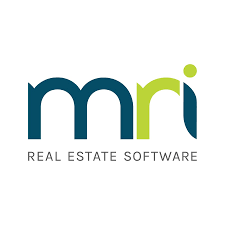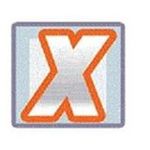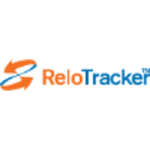What Is Relocation Software?
Relocation software, often known as relocation management software (RMS), is a specific form of software that helps businesses and organizations manage their employees' relocation operations. It is a comprehensive solution that streamlines and automates many components of the relocation process, making it easier, more efficient, and time-saving for both the employee and the business.
At its core, relocation software serves as a central center for monitoring and managing all aspects of the relocation process. This involves activities like coordinating household moving services, tracking expenses and budgets, managing tax compliance, monitoring employee relocation policy adherence, and providing a communication platform for employees, relocation coordinators, and stakeholders.
One of the primary benefits of employing relocation software is that it removes the need for manual processes and paperwork, lowering the risk of errors while saving time and costs. It also promotes more transparency and accountability by centralizing and making all relocation-related information readily available. Additionally, relocation software frequently includes capabilities that aid in cost savings and compliance.
For example, it can assist in identifying tax-advantaged relocation choices, monitoring and controlling budget restrictions, and ensuring compliance with corporate policies and government requirements. Overall, investing in relocation software may be extremely beneficial for businesses and organizations with a high volume of staff relocations, as well as those wishing to expedite their relocation procedures.
It streamlines the procedure for employees while simultaneously saving the business money, increasing efficiency, and ensuring compliance. When selecting relocation software, think about your individual goals and budget, and seek for features like customized dashboards, mobile accessibility, reporting capabilities, and ease of interaction with other systems.
What Are The Recent Trends In Relocation Software?
Relocation software, often known as mobility software, is a valuable tool for businesses and individuals wishing to streamline the process of relocating to a new location. This software category has evolved significantly over time, becoming more efficient and user-friendly.
Let's explore, we'll look at the latest developments in relocation software that you should be aware of before making a purchase.
1. Cloud-Based Solutions: One of the most significant trends in relocation software is the transition to cloud-based solutions. With the growing popularity and dependability of cloud technology, numerous software companies now provide web-based platforms for managing migration operations. These solutions are accessible from any device with an internet connection, allowing employees to easily access and track their relocation progress.
2. AI And Automation: Artificial intelligence (AI) and automation have become important trends in relocation software. These technologies enable the automation of repetitive operations like data input and documentation, which saves time and reduces the possibility of human error. AI-powered chatbots have also gained popularity in relocation software, offering consumers real-time assistance and support.
3. Mobile Applications: In today's digital age, people rely extensively on smartphones for a variety of purposes, including migration. Keeping this in mind, numerous relocation software providers have created mobile applications to make the move process easier and more convenient. These apps enable employees to monitor their relocation status, connect with their relocation professionals, and access critical papers while on the road.
4. Data Analytics: Data analytics has become an essential component of relocation software, allowing users to gain insights into their relocation processes. Data analytics allows users to manage costs, evaluate employee happiness, and find areas for development. This data can help businesses make better decisions and optimize their migration strategy.
5. Integration With HR Systems: Another key trend in relocation software is the integration of HR systems. Relocation software, when integrated with HR systems, can ease the process of shifting personnel within a business. This link enables the seamless transfer of employee data, eliminating the need for duplicate input and reducing the likelihood of errors.
Benefits Of Using Relocation Software
Relocating can be a difficult and time-consuming effort, but with the help of relocation software, the process can be simplified and more efficient. Relocation software provides numerous benefits, like inventory management and expense tracking, that can considerably assist any individual or firm planning to transfer.
Let's explore, we'll go over the primary benefits of utilizing relocation software and explain why it's such an important tool for a smooth and stress-free relocation.
1. Streamlines The Migration Procedure: Relocation software is intended to simplify and automate the entire relocation process. It removes the need for manual data entry, documentation, and spreadsheets, saving you significant time and effort. transfer software, which includes features such as centralized data storage, task management, and real-time updates, guarantees that all components of the transfer are structured and accessible.
2. Improves Cost Management: One of the most significant advantages of using relocation software is the ability to track expenses and manage budgets. It enables users to input and track costs for transportation, housing, and other relocation charges, offering a realistic picture of the whole relocation budget. This helps to avoid overpaying and promotes better financial management.
3. Promotes Communication And Collaboration. Relocation frequently includes several parties, including the relocating individual, the HR department, and relocation service providers. Relocation software serves as a hub for all stakeholders to communicate and coordinate, ensuring everyone is on the same page. Features like document sharing and real-time texting make it simple to stay connected and informed during the migration process.
4. Offers Customized Options: Every relocation is unique, as are the demands of each person or business. Relocation software provides configurable solutions to meet specific needs. Whether you need to create unique reports, build up personalized workflows, or integrate with existing systems, relocation software may be tailored to your specific requirements.
5. Improves Data Accuracy And Security. Given the sensitivity of relocation data, it is critical that it is accurate and secure. Relocation software offers a secure and centralized platform for storing and managing data, reducing the likelihood of errors and data breaches. It also provides data backup and recovery options, ensuring that all data is securely kept and conveniently accessible.
Important Factors To Consider While Purchasing Relocation Software?
When selecting relocation software, every buyer should examine a few crucial factors. Whether you are a small business trying to expedite your employee relocation process or a huge enterprise handling frequent corporate migrations, selecting the proper software is critical to ensuring a seamless and efficient relocation experience.
Let's explore, we'll go over the most crucial variables to consider while selecting relocation software.
1. Features And Functionality: The first and most important considerations are the software's features and functionality. It should have the resources and capacities to suit your specific relocation requirements. Automated spending monitoring, customisable relocation packages, real-time reporting, and tax and immigration law compliance are some of the most important things to look for.
2. Scalability: As your firm expands, so will your relocation needs. As a result, it is critical to choose software that is scalable and can meet your future requirements. Consider the amount of staff you intend to relocate over the next few years and confirm that the program can handle such growth without limitation.
3. Integration With HR Systems: For maximum results, relocation software should be integrated with your HR system. It enables smooth data interchange, reduces manual entry, and prevents duplication of efforts. Before making a purchase, determine whether the software is easily integrated with your existing HR systems.
4. User-Friendliness: Relocation software should have a simple and intuitive interface. It should be simple to navigate and require little training for users. Complicated software can cause annoyance and poor productivity.
5. Data Security: Relocating personnel entails dealing with sensitive and confidential information, such as personal and financial records. To safeguard sensitive information from cyber dangers, the program must have strong data security mechanisms such as encryption and access controls.
6. Customization And Personalization: Each organization has distinct relocation needs, so a one-size-fits-all approach may not be effective. Consider selecting software that can be customized and personalized to meet your specific business needs.
7. Customer Help: When investing in software, it is critical to have dependable customer help in case of technical problems or questions. Investigate the customer service given by the software vendor, including availability, response speed, and support channels.
8. Price And Value For Money: The cost of relocation software varies according to its features and functionalities. It is critical to assess the value it will provide to your organization and select software that provides the most value for money.
By taking these aspects into account, you can make an informed decision about which relocation software is most suited to your business needs. Remember to investigate and evaluate several software solutions to get the one that fits your budget and needs. With the appropriate relocation software, you can simplify and streamline the process, save time and money, and assure a great employee experience.
What Are The Key Features To Look For In Relocation Software?
When it comes to selecting the best relocation software, potential purchasers should consider a few crucial factors. These features not only ensure a smooth and effective relocation procedure, but they also contribute to maximizing the benefits of employing such software.
As a potential buyer, here are the top things to consider while assessing various relocation software options:
1. Automated Relocation Process: One of the primary advantages of adopting relocation software is its capacity to automate and streamline numerous operations during the relocation process. Look for software that automates processes like staff onboarding, expenditure management, and relocation coordination. This not only saves time and effort, but also reduces the possibility of error.
2. Cloud-Based Platform: In today's digital age, relocation software must be cloud-based. This provides for easy access from anywhere and at any time, which benefits both the organization and the personnel. A cloud-based platform also protects data and enables real-time updates and communication.
3. Customizable Solutions: Each firm has unique relocation requirements, and a one-size-fits-all solution may not always be effective. Look for software that provides customizable solutions, allowing you to tailor features and processes to your company's needs.
4. Expense Management: Moving often involves a number of fees, including freight, temporary accommodation, and transportation. A decent relocation software should include a complete expenditure management tool that enables tracking, reporting, and budgeting of these charges. This not only helps to control costs, but it also increases openness and accountability for both the organization and its personnel.
5. Reporting And Analytics: Relocation software should include complete reporting and analytics capabilities. This enables businesses to monitor migration patterns, discover opportunities for improvement, and make data-driven decisions. Look for software that offers real-time data and customisable reports to fit your specific reporting requirements.
6. Integration Capability: Relocation is frequently a component of the overall personnel management and HR process. Look for software that integrates effortlessly with your current HR systems, such as payroll and personnel databases. This provides a smooth flow of data and prevents duplication of work.
By taking these essential qualities into account, you can choose the ideal relocation software that fulfills your company's requirements while also making the relocation process efficient, cost-effective, and hassle-free. Take the time to investigate and compare several possibilities, and then select the program that best fits your company's goals and objectives.
Why Do Businesses Need Relocation Software?
Businesses frequently relocate for a variety of reasons, including expanding operations, lowering expenses, or seeking a better site. While the decision to migrate may present exciting new prospects, the procedure can be difficult and time-consuming. This is where the relocation software comes in. Relocation software is a specialist application that helps organizations expedite and simplify their relocation processes.
It provides a full solution for managing and organizing all areas of relocation, including planning and budgeting, logistics coordination, and staff communication. One of the primary reasons why firms use relocation software is to save time and resources. Businesses can avoid the burden of manually tracking and managing numerous parts of relocation by consolidating all relevant information and responsibilities on a single consolidated platform.
This not only saves time but also lowers the possibility of mistakes or oversights. Furthermore, relocation software can help organizations save money by automating their budgeting processes. It provides thorough cost estimates and allows organizations to compare quotes from several providers to determine the best cost-effective options. Businesses that have a comprehensive understanding of the relocation costs can make informed decisions and avoid overspending.
Another significant advantage of relocation software is its capacity to enhance the overall relocation experience for employees. The software creates a personalized portal where employees can access all necessary information and services, such as housing possibilities, school information, and even cultural guides for their new region. This can make employees feel more supported and prepared to make the change successfully.
Furthermore, relocation software provides powerful reporting and analytics capabilities, allowing organizations to track and assess the effectiveness and ROI of their relocation operations. This information can help organizations make better relocation decisions in the future and continuously improve their operations.
How Much Time Is Required To Implement Relocation Software?
The time required to implement relocation software varies according on your company's specific demands and requirements. However, on average, it can take anywhere from a few weeks to a few months to fully deploy and get the program functioning smoothly. The first stage in implementing relocation software is usually the initial setup and customization phase. This includes entering your company's information, policies, and processes into the program.
The time required for this phase varies according to the complexity and size of your company. Next, your organization will need to import data from its existing systems, such as staff information, relocation requests, and budgets. This process usually takes a few weeks and may necessitate some data cleaning and organization to ensure precise and seamless integration.
Once the software has been installed and data imported, it must be tested and configured to ensure proper operation. This process may take many weeks to guarantee that all features and functionalities work properly. Finally, there will be a training time to teach your personnel how to utilize the software properly. The amount of time required for training will vary depending on the complexity of the software and the number of personnel to be trained.
Overall, the implementation procedure for relocation software can take 6-12 weeks for small to medium-sized businesses, while bigger businesses may require several months to finish. It is vital to remember that selecting a dependable and user-friendly software can significantly minimize the time and effort required for deployment.
What Is The Level Of Customization Available In Relocation Software?
Relocation software is an invaluable resource for businesses and people seeking to ease the process of relocating to a new location. One key element to consider when selecting relocation software is the level of customization provided.
We'll look at the many levels of customisation provided by relocation software and how they may help purchasers.
1. Basic Customization: This degree of customization allows customers to include their company logo and branding in the software, making it more visually appealing and professional. Users can also personalize the interface by adding or removing individual features and modules based on their requirements.
2. Advanced Customization: Some relocation software provides a higher level of customization, allowing customers to adjust the software to their own business procedures. This may entail developing bespoke workflows, adding custom fields, and interacting with existing systems and databases.
3. Global Customization: Companies with a global presence must have relocation software that can be adjusted to match the specific needs of different countries and areas. This level of customization includes language support, customized content, and adherence to area laws and regulations.
4. Personalization: With the advancement of AI and machine learning, some relocation software can now deliver a tailored experience for each user. This means that the software may learn about the user's preferences, habits, and needs in order to generate personalized recommendations and suggestions.
5. Tailored Solutions: For firms with particularly complex relocation processes, some relocation software suppliers offer tailored solutions developed from the ground up to fit the buyer's exact requirements. This can include budget tracking, expat help, and customized reporting.
Which Industries Can Benefit The Most From Relocation Software?
Relocation can be a difficult and complicated process for both individuals and organizations. However, with the help of relocation software, this process can be streamlined and more efficient. This technical solution provides a comprehensive set of tools and features that are specifically designed to streamline and simplify the relocation process for both people and enterprises. While relocation software offers many advantages, certain sectors can gain the most from incorporating it into their relocation processes.
The following sectors can profit from relocation software:
1. Corporate: As businesses evolve and expand, employees are frequently required to relocate in order to pursue new possibilities or meet corporate objectives. This industry can benefit immensely from relocation software, which provides a unified platform for organizing relocation requests, tracking expenses, collaborating with vendors, and giving staff with the information and support they require.
2. Real Estate: The real estate industry plays an important role in the relocation process because individuals and businesses frequently need to find new housing or office space in a different area. Relocation software can help real estate professionals manage their clients' relocation needs by identifying suitable properties, coordinating logistics, and handling legal papers.
3. Government: Government entities frequently have to relocate staff owing to job transfers or reassignments. With a huge number of personnel to manage and tight laws to follow, relocation software can assist government organizations in efficiently managing and tracking the relocation process while guaranteeing policy and regulatory compliance.
4. Healthcare: Medical practitioners are frequently required to relocate in order to pursue work possibilities or receive training. Relocation software can help hospitals and other healthcare facilities manage the relocation process for their staff, assuring a smooth transfer and avoiding delays to patient care.
5. Hospitality: Hotels, resorts, and other hospitality organizations frequently need to shift staff to oversee many properties or projects. Relocation software can assist these organizations manage employee transfers, track expenses, and provide a stress-free relocation experience for their employees.
Conclusion
Finally, selecting the appropriate relocation software for your organization can significantly streamline and simplify the move process. By following the advice provided in this article, you can make an informed decision and invest in software that suits your individual requirements and budget. It is critical to carefully evaluate your company's relocation process and identify the main features and functionalities that are necessary for your organization.
Additionally, examine the software's scalability and compatibility with your present systems and processes to guarantee a smooth implementation. Also, don't forget to properly evaluate the pricing and support alternatives provided by various providers. This will assist you in determining the best cost-effective and dependable solution for your business.
Remember that investing in the correct relocation software can save you time, money, and resources in the long term. So take your time, conduct your research, and select dependable and user-friendly software to help you expedite and optimize your migration process.















